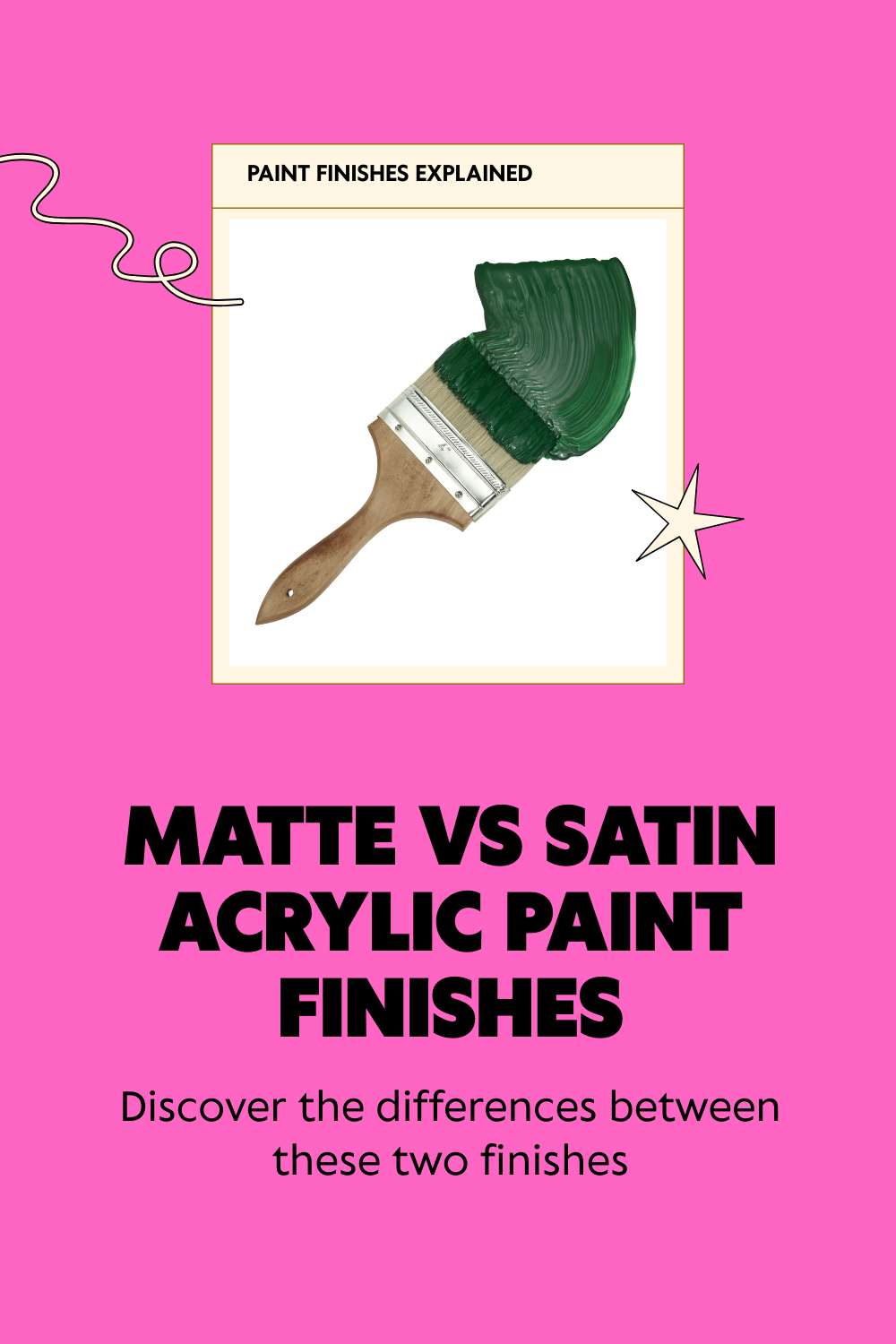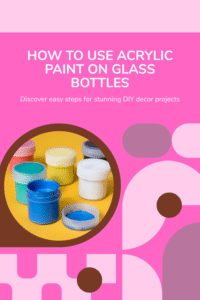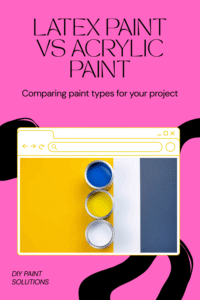Poster Paint vs Acrylic Paint
When I first began exploring art supplies, I’ll admit I underestimated how much the paint you choose can shape your creative process. Poster paint and acrylic paint are two of the most popular options, yet they couldn’t be more different in their uses and results.
Through years of experimentation, I’ve had a chance to explore both thoroughly, and I’ve learned that choosing between the two isn’t as simple as grabbing the first jar you see on the shelf.
If you’re torn between poster and acrylic paint, I’ll take you through what you need to know to make the right choice for your next creative venture.
What Are Poster Paint and Acrylic Paint?
Before I get into the details, it’s important to define these two types of paint.
Poster paint, also sometimes called tempera paint, is a water-based medium known for its vibrant, matte finish. This paint is widely used in schools, crafts, and for quick, colorful projects. It’s typically inexpensive and comes in a wide variety of bright colors.
Acrylic paint, on the other hand, is a professional-grade, versatile medium that offers a smoother finish, strong pigmentation, and durability.
It’s also water-based, but the pigments are mixed with an acrylic resin binder, which dries to a water-resistant, slightly glossy surface.
You’ll find acrylic paint in a range of qualities, from student-grade to professional, and it’s widely used in everything from fine art to DIY crafts.
Both paints have their merit, but their differences go far beyond surface level. Trust me, they’re better suited for very different purposes!
The Key Differences Between Poster Paint and Acrylic Paint
The more I worked with poster paint and acrylic paint, the more I noticed how distinct they are in terms of texture, application, and longevity. Here are the major differences:
1. Finish and Appearance
- Poster Paint:
One of the standout qualities of poster paint is its flat, matte finish. The colors are bold and stark, but they lack any kind of sheen or gloss. If you’re working on a vibrant design or a decorative craft, poster paint creates a bold, playful effect. - Acrylic Paint:
Acrylic paint, in contrast, delivers a more polished and professional look. It dries to a finish that can range from matte to glossy, depending on the type of acrylic you’re using. This versatility allows for nuanced works of art with excellent depth and vibrancy.
2. Durability
- Poster Paint:
Durability is probably the biggest drawback of poster paint. Once it dries, there’s very little resilience to water, peeling, or fading. If even a drop of water lands on poster paint, it can smear or dissolve almost entirely. I found this out the hard way during a rainy-day craft project! - Acrylic Paint:
Acrylic paint is highly durable once dry. The paint becomes waterproof and resists cracking, peeling, and fading over time. This makes it perfect for more permanent projects like wall art, furniture design, and canvas paintings.
3. Surface Compatibility
- Poster Paint:
Poster paint works best on paper-based surfaces. It’s ideal for posters and craft projects but doesn’t perform as well on non-absorbent surfaces like plastic, glass, or metal. When I tried using poster paint on wood, I noticed it flaked off pretty easily unless I sealed it. - Acrylic Paint: This is where acrylic paint shines. It can adhere to almost any surface you can think of, from paper and canvas to wood, metal, glass, and even fabric. I’ve painted everything from flower pots to shoes with acrylic paint, and its adaptability always impresses me.
4. Drying Time
- Poster Paint: Poster paint dries very quickly and often within minutes, especially if you’re working with thin layers. This quick drying time is perfect for kids or anyone doing quick, simple projects.
- Acrylic Paint: Acrylic paint also dries relatively fast, but not as instantly as poster paint. You’ll have several minutes to work with and blend acrylic before it dries, which is helpful for more complex designs and layering techniques.
5. Ease of Use
- Poster Paint: Poster paint is as user-friendly as it gets. It’s pre-mixed and ready to use right out of the jar or tube, making it great for beginners, kids, or quick projects. Cleanup is a breeze too since it washes off with water.
- Acrylic Paint: Acrylic paint requires a little more practice and preparation. Since the consistency can vary (some are thicker than others), you might need to use water or a medium to achieve your desired effect. It’s still easy to clean up while wet but becomes permanent after drying.
6. Cost
- Poster Paint: Poster paint is very affordable. It’s meant for beginner-level projects, so you can buy large quantities without hurting your wallet. I always keep some on hand for casual or impromptu crafts.
- Acrylic Paint: Acrylic paint is costlier, especially if you’re buying artist-grade supplies. That said, I believe the price reflects the quality, so it’s well worth it for projects where a polished outcome is essential.
When to Choose Poster Paint
I’ll be honest; I don’t think poster paint gets enough credit for how fun and versatile it is. Here are some situations where poster paint stands out:
- For Kids’ Projects
Poster paint is non-toxic, washable, and easy to use, which makes it perfect for children. It’s a favorite in classrooms and crafting at home because it’s safe for tiny artists to experiment with. - Temporary or Fast Projects
If you’re working on posters, banners, or set props, poster paint delivers bold color without the need for hefty investment. - Decorative Crafts
Whether it’s a scrapbook page or a cardboard model, poster paint creates bold, eye-catching designs without requiring precision techniques. - Testing or Playing Around
When I’m brainstorming ideas or trying out color combinations, poster paint woks as a low-cost way to play with design concepts.
When to Choose Acrylic Paint
Acrylic paint is my go-to for any project where I want a strong finish and professional feel. Here are some examples of when it’s the better choice:
- Fine Art Projects
If you’re working on a painting or detailed design that requires blending, layering, or a variety of textures, acrylic paint gives you the flexibility to achieve those effects. - Long-Lasting Craft Projects
For objects like decorated furniture, outdoor craft items, or items for gifting, acrylic paint ensures durability and a high-quality look. - Multisurface Applications
I use acrylic paint any time I’m painting on unconventional surfaces like fabric, pottery, or glass. - Customization Goals
I’ve personalized everything from sneakers to tote bags with acrylic paint, and the results are always stunning and long-lasting.
Tips for Using Poster and Acrylic Paint
No matter which paint you choose, there are some helpful tips I’ve learned along the way:
- Experiment First: Try different surfaces, brushes, and techniques to see how the paint behaves. Understanding its limitations is the key to getting better results.
- Seal When Needed: For poster paint, always apply a sealant if you want the design to last or resist water damage. For acrylic, a varnish can add an extra layer of protection and adjust the gloss level.
- Mind the Brushes: Poster paint can clean up easily, but acrylic paint might ruin your brushes if allowed to dry. Always rinse your brushes quickly, no matter which paint you’re using.
- Layer Thoughtfully: If you’re working on a layered design, acrylic paint is better for creating smooth, blended transitions, while poster paint is best for flat, blocked colors.
Final Thoughts
Choosing between poster paint and acrylic paint really comes down to your needs and goals. Poster paint is perfect for quick, casual, and kid-friendly projects where you just want to have fun.
Acrylic paint, however, offers more versatility, durability, and impact, making it ideal for artists and crafters looking for a long-lasting, professional finish.
I’ve used both extensively and always decide based on the project at hand. Whether it’s a simple school poster or a canvas painting meant to hang on my wall for years to come, there’s a paint for every purpose.
Now it’s your turn to pick the right tool for your masterpiece. Happy painting!




